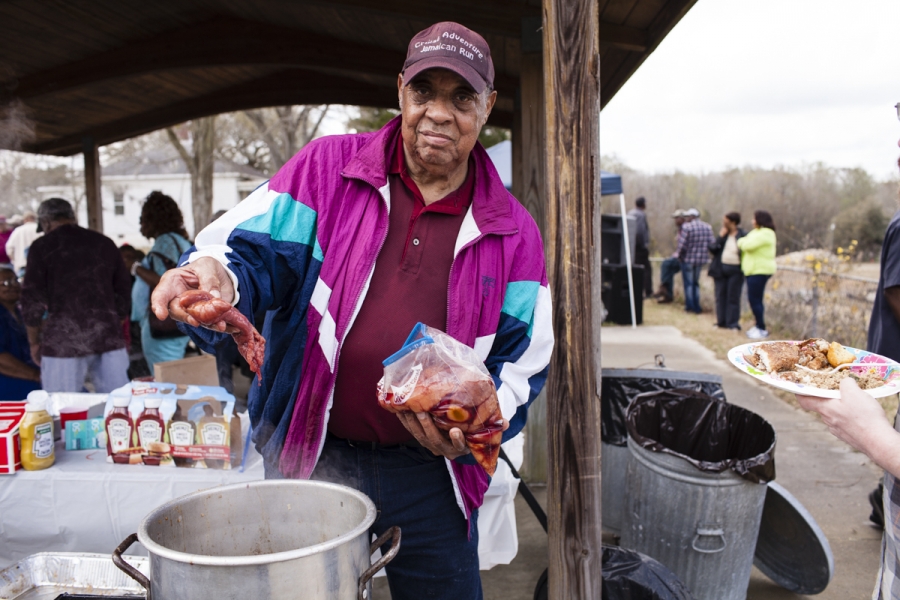
Things To Eat
In our fall issue, John McElwee writes about the Blue Monday Shad Fry, held every spring in East Arcadia, North Carolina. The photography of documentarian Chris Fowler, who invited McElwee along, accompanies the piece. We asked Fowler for more from East Arcadia and some of his other projects around the state. —Eds.
 In “Some Words for Fall,” the poet James Applewhite writes of eastern North Carolinians, “The language they speak is things to eat.” He’s right. As a documentary photographer, working with organizations like the North Carolina Folklife Institute, I have the great good fortune of engaging in this conversation regularly.
In “Some Words for Fall,” the poet James Applewhite writes of eastern North Carolinians, “The language they speak is things to eat.” He’s right. As a documentary photographer, working with organizations like the North Carolina Folklife Institute, I have the great good fortune of engaging in this conversation regularly.
I was born in rural eastern North Carolina and raised up in Duplin County, a place focused on farming and food. Memories of homegrown collards boiling at my granny’s and fish frying under sheds, blue smoke rolling out of hog cookers and steam rising off clusters of oysters spread on a communal table, formed deep impressions on me. No words I have are enough. I make pictures.
Blue Monday, continued
I first attended the East Arcadia Blue Monday Shad Fry in April 2013. My business there was to do with a folklife documentation project for the NC Folklife Institute. I arrived at Lock and Dam No. 1 with my colleague, the folklorist Steve Kruger, around noon. Steve and I were fairly conspicuous—white guys with notebooks and cameras. Everyone was very generous and welcoming. When I asked if I could have another helping of shad roe, Earl Brown shoveled about two pounds off the cooker onto the paper plate that I was holding, which bent under the weight.
https://main.oxfordamerican.org/item/439-photo-essay-things-to-eat#sigProId406b5f772e
Brunswick Catch
The folklife project that took us to Blue Monday covered three counties: Bladen, Brunswick, and Columbus. South of East Arcadia, in coastal Brunswick County, oysters, clams, and shrimp are more typical than shad. Foodways are an important piece of folklife documentation but we were also interested in occupational folklore, and commercial fishing is a traditional occupation there. Many of the local fishermen and seafood dealers we met were connected with Brunswick Catch, a group that supports local fisheries through advocacy and education.
https://main.oxfordamerican.org/item/439-photo-essay-things-to-eat#sigProId7858e41ae0
Clarkton Charcuterie
Traveling northeast from East Arcadia I met the McGhee family. Scott McGhee is a bladesmith, farmer, arborist, and chef. He and his wife, Lydia, raise Guinea Hogs—sometimes called Acorn Eaters or Yard Pigs—once the predominate breed of hog in the Southeast. As industrial agriculture expanded in the twentieth century, many heritage hog breeds, including the American Guinea, dwindled. In 2011, there were less than one thousand known American Guinea Hogs in existence. The McGhees believe that in order to save the breed, the animals have to be carefully raised for their highest and best use: to be eaten.
https://main.oxfordamerican.org/item/439-photo-essay-things-to-eat#sigProId3d25281053



